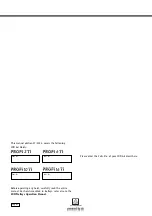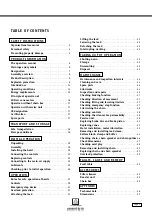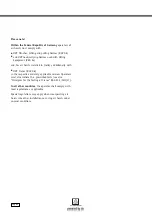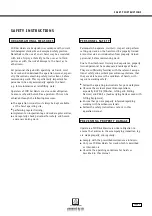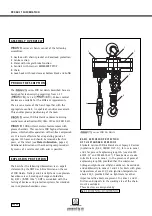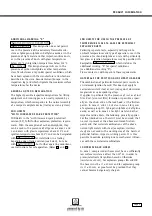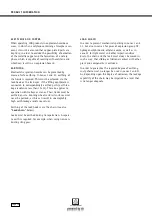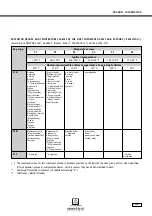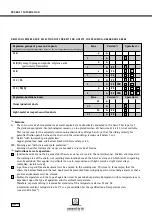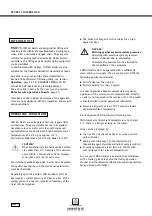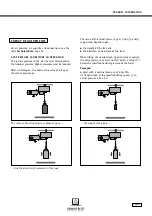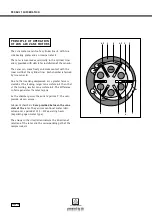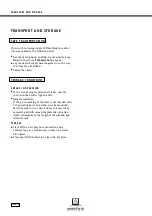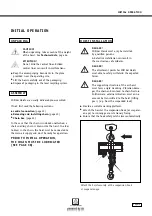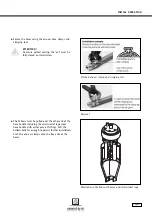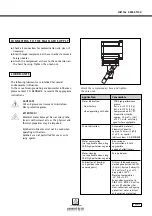
AC E T Y L E N E A N D C O P P E R
When operating JDN products in explosion-hazardous
areas, in which an acetylene-containing atmosphere can
occur, it must be ensured that copper-plated parts are
kept dry, in order to exclude the possibility of oxidation
of the metallic copper and the formation of a watery
phase, which is capable of reacting with acetylene and
which can result in an explosion hazard.
E A R T H I N G
Electrostatic ignition hazards can be prevented by
means of safe earthing. In zones 1 and 21, earthing of
the hoists is required. This must be achieved via the
load hook or the load eyes, if the lifting equipment is
connected to correspondingly earthed parts (earth lea-
kage resistance less than 10
6
Ω
). This also applies to
operation with trolleys or cranes. Their tracks must be
earthed on site. Running wheels and rail surfaces must
never be painted, as this can result in unacceptably
high earth leakage resistance values.
Earthing of the load hook is via the chain (see also
"Load chain"
below).
Loads must be earthed during transportation. A separa-
te earth is required, for example, when using non-con-
ducting sling gear.
L OA D C H A I N
In order to prevent mechanical sparking in zones 1 and
21, but also in zone 2 for gases of explosion group IIC,
hydrogen sulphide and ethylene oxide, as well as in
zone 22 for light metal and other impact-sensitive
dusts, the chain and the load must always be moved in
such a way, that sliding or frictional contact with other
plant and components is excluded.
In order to guarantee the required degree of earthing,
rusty chains must no longer be used in zones 1 and 21.
As, depending upon the degree of corrosion, the leakage
capability of the chain may be impaired to a level that
is no longer adequate.
P RO D U C T I N F O R M AT I O N
Page 10


